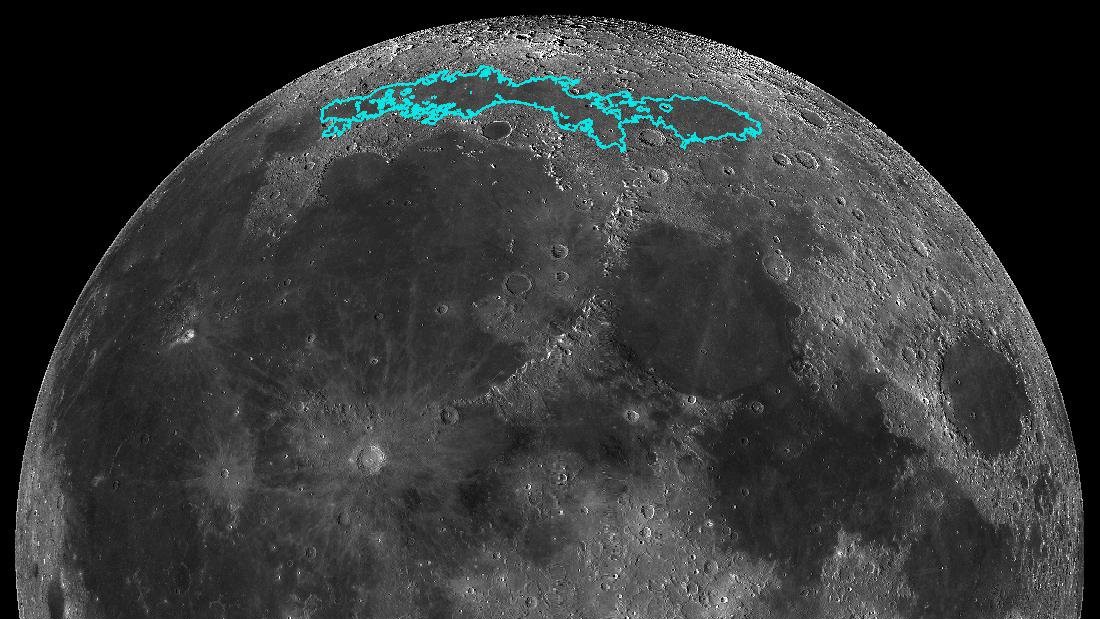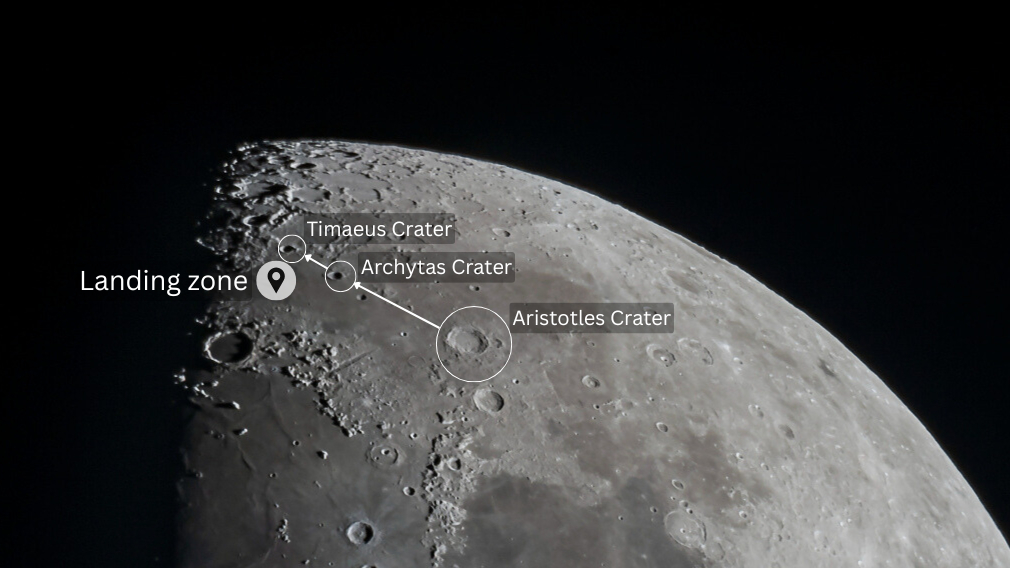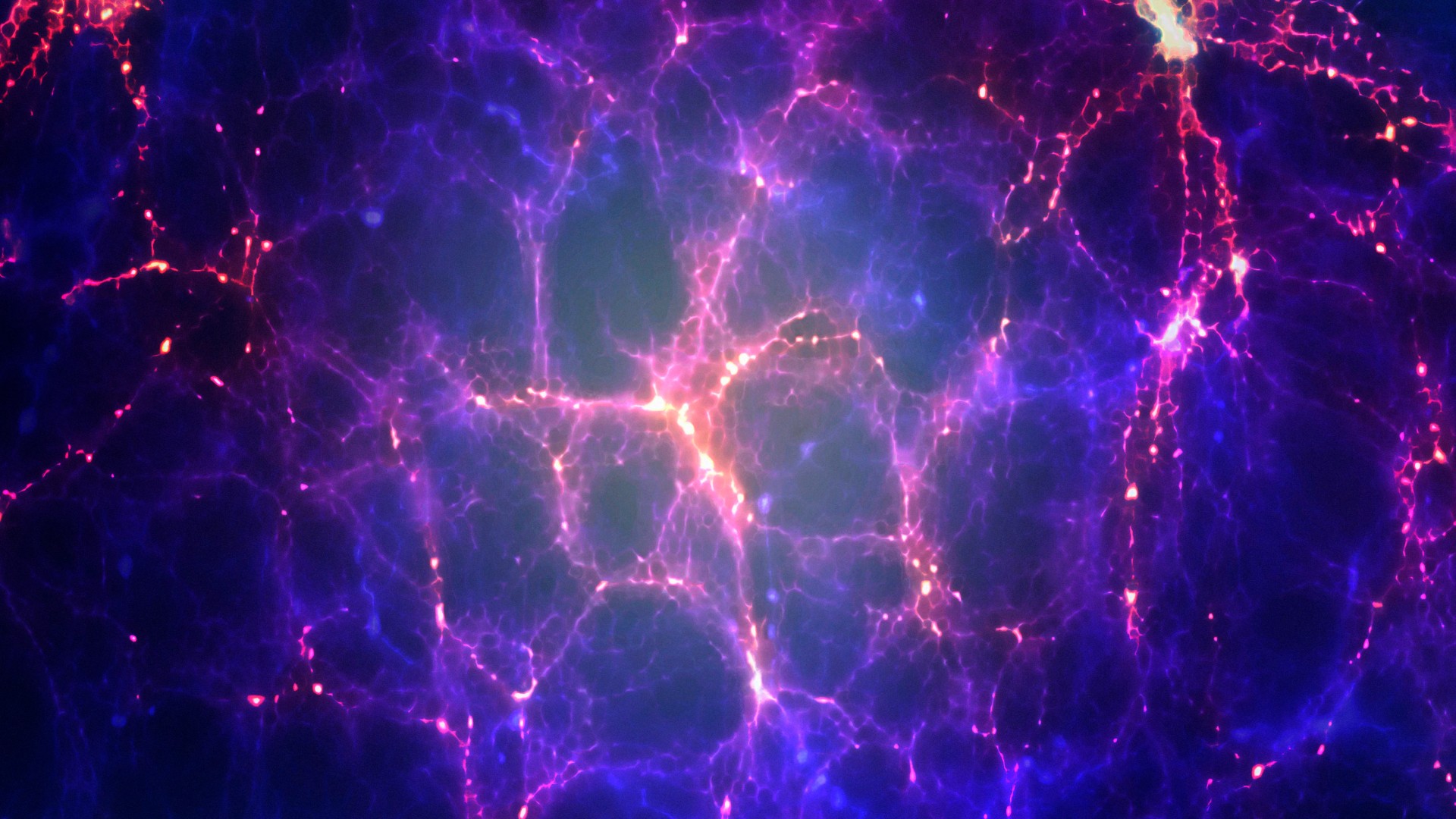ispace's Resilience spacecraft lands on the moon today: Here's how to see the landing zone on the lunar surface
The lander won't be visible from Earth, but its landing site on Mare Frigoris will be.

ISpace's private Resilience Lander will attempt to touch down on the Mare Frigoris region of the moon's surface on June 5, at 3:17 p.m. EDT (1817 GMT). While you won’t be able to see the lander itself from Earth, you can spot its landing zone on the lunar surface — here’s how.
Mare Frigoris —Latin for the "Sea of Cold" — formed billions of years ago when lava flooded a colossal network of impact basins left behind by brutal asteroid strikes. These vast reservoirs of lava swiftly cooled to form dark scars on the lunar surface that we see today.
The Sea of Cold occupies an 18,000 square kilometer (6,950 square mile) swathe of the surface close to the moon's north polar region, though its average depth of just 124 miles (200 km) can make it tricky to pick out with the naked eye. The Japanese-built Resilience lander is aiming to touch down 60.5 degrees north the the lunar equator, with a longitude of 4.6 degrees west, placing it close to Mare Frigoris center, according to the spacecraft's creator ispace.
How to find the Resilience's potential landing site
Resilience is far too small to be seen from Earth, but its approximate landing site on the lunar surface is easily identifiable, if you know where to look. In the nights surrounding June 5, look toward the southeastern sky — the moon will become more visible after sunset.
A pair of 10x50 binoculars will help you find the slender form of Mare Frigoris darkening the northern region of the moon's surface, but a telescope with an aperture of 6 inches or more will help resolve smaller details and allow you to zero in on Resilience's landing site.

A good way to find the Resilience Lander's forever home is to locate the Aristotles Crater, which sits above Mare Serenitatis on the southeastern shore of Mare Frigoris. From there, look to the northwest to find the Archytas Crater scarring the southern shore of Mare Frigoris and beyond that the similarly-sized Timaeus crater.
The Resilience Lander will set down in the area below Timaeus, to the left of Archytas, fairly close to the line dividing the dayside and nightside of the lunar surface, known as the terminator.
Get the Space.com Newsletter
Breaking space news, the latest updates on rocket launches, skywatching events and more!
When and how to watch the Resilience lander attempt its lunar landing
The Resilience Lander is due to touch down on Thursday, June 5, at 3:17 p.m. EDT (1817 GMT), though the exact timing is subject to change based on operational conditions. A live stream of the event will be available here on Space.com, courtesy of ispace. from 2:10 p.m. EDT on June 5 (1810 GMT/3:10 a.m. JST on June 6), with both English and Japanese language versions available.
This will be the ispace's second try at landing a spacecraft on the moon, following the unsuccessful landing attempt of the Japanese company's Hakuto-R spacecraft in April 2023. The company has also selected three backup landing sites further to the west in Mare Frigoris, should conditions make the primary touch down site untenable.
Join our Space Forums to keep talking space on the latest missions, night sky and more! And if you have a news tip, correction or comment, let us know at: community@space.com.

Anthony Wood joined Space.com in April 2025 after contributing articles to outlets including IGN, New Atlas and Gizmodo. He has a passion for the night sky, science, Hideo Kojima, and human space exploration, and can’t wait for the day when astronauts once again set foot on the moon.
You must confirm your public display name before commenting
Please logout and then login again, you will then be prompted to enter your display name.
